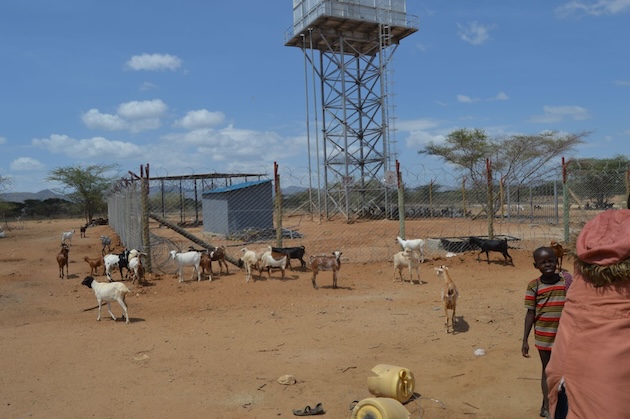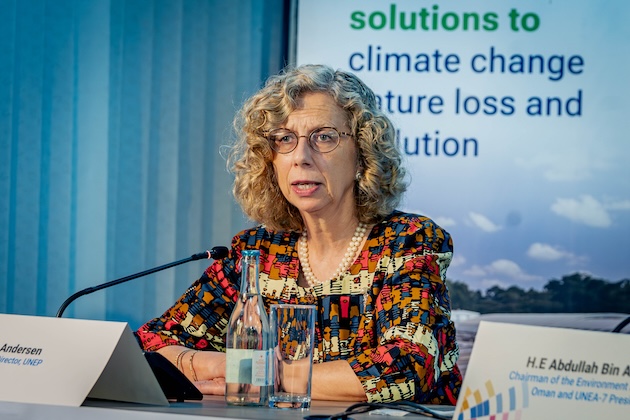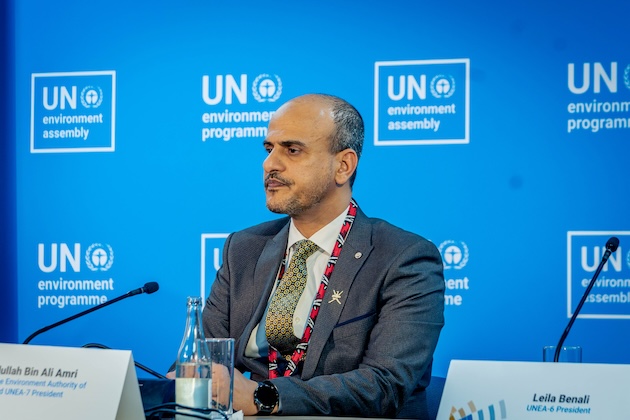UN Environmental Assembly Call for Action to Address Planetary Triple Threat — Global Issues

UN Environmental Assembly Call for Action to Address Planetary Triple Threat — Global Issues
[ad_1]

NAIROBI, Mar 04 (IPS) – The Sixth United Nations Environmental Assembly (UNEA-6) ended with delegates calling for firm actions to address the triple planetary crisis of climate change, nature loss, and pollution.
The assembly also reaffirmed its call for “environmental multilateralism” in seeking solutions to the threats, noting that time was running out fast before the threats could besiege the planet and make life a bigger nightmare, especially for the underprivileged.
The concept has been part of the main messages amplified by United Nations Environmental Programme (UNEP) Executive Director Inger Anderson and part of its clarion call as well.
Also topping their calls is the plea for countries to remain on course in implementing the principles of the Paris Agreement, with many noting that the pact provided an ambitious roadmap to boldly ‘tame the climate crisis” by cutting greenhouse gas (GHG) emissions.
While delegates at the five-day assembly at the UNEP headquarters in Nairobi, Kenya, which ended on Friday, March 1, 2024, observed with satisfaction that efforts at curbing plastic pollution could soon become a reality, some expressed concern that a Ministerial Declaration issued at the end of the event was not explicit on the urgency of actions needed to end the plastic crisis, nor did it mention the legally binding agreement on ending plastic pollution.
The agreement is currently under negotiation, and parties meet in Montreal, Canada, in April, where a deal could be reached.
“We emphasize the importance of advancing integrated, science-based approaches, informed by the best available science and the traditional knowledge of Indigenous Peoples as well as local communities, in order to strengthen resilience to current, emerging, and future challenges and promote global solidarity.”

“We recall General Assembly resolution 76/300 of July 28, 2022, on the human right to a clean, healthy, and sustainable environment,” the five-page ministerial statement read.
The 21-point document issued at the closing of the event was also emphatic on the need for effective, inclusive, and sustainable multilateral actions to tackle climate change, biodiversity loss, and pollution, reaffirming “all the principles of the Rio Declaration on Environment and Development, as well as the 2030 Agenda for Sustainable Development and its Sustainable Development Goals.”
The ministers of environment from 182 member states acknowledged the threats posed to sustainable development by global environmental challenges and crises, including climate change, biodiversity loss, and pollution, as well as desertification, land and soil degradation, drought, and deforestation.
The gathering passed a record 15 resolutions and two decisions, as proposed by various delegations, with some being hailed as very critical, while others were viewed as crucial and timely.
Raising the most curiosity is a resolution by Ukraine, calling for “environmental assistance and recovery in areas affected by armed conflicts,” which was endorsed despite being introduced on Thursday. The country is involved in armed conflict with Russia, and has been exposed to risks, including nuclear accidents, by the fighting.
On its part, Saudi Arabia sponsored one calling for “strengthening international efforts to combat desertification and land degradation, restore degraded land, promote land conservation and sustainable land management, contribute to land degradation neutrality and enhance drought resilience.”
Others included resolutions on considering environmental aspects of minerals and metals, the call for circularity of a resilient and low-carbon sugar cane agro-industry, promoting sustainable lifestyles, an appeal for action on sound management of chemicals and waste, action on highly hazardous pesticides fronted by Ethiopia, and a call for action on combating sand and dust storms by Iran.
“I am proud to say this was a successful Assembly, where we advanced on our core mandate: the legitimate human right to a clean, healthy, and sustainable environment, everywhere,” said Leila Benali, UNEA-6 President and the Minister of Energy Transition and Sustainable Development of Morocco. “As governments, we need to push for more partnerships with stakeholders to implement these mandates. We need to continue to partner with civil society, continue to guide and empower our creative youth, and also with the private sector and philanthropies,” the minister added.

Decisions arrived at the assembly are “most often” followed by actions and UNEP and member states will initiate actions based on the resolutions, assured Anderson, UNEP’s Executive Director.
At the same time, the assembly was told that more than a third of the world’s population is drowning in garbage, with over 2.7 billion people not having their waste collected, largely in the developing regions of the world.
Out of the number, 2 billion people are living in rural areas, while 700,000 of them are in urban areas, a new United Nations report launched at the assembly revealed.
The report, Turning rubbish into a resource: Global Waste Management Outlook 2024 (GWMO 2024) revealed that an estimated 540 million metric tons of municipal solid waste, an equivalent of 27% of the global total waste, was not being collected, with only 36% and 37% of the refuse generated in Sub-Saharan Africa and Central and South Asia regions, respectively, being collected.
This was in sharp contrast to the situation in developed and upper-middle-income countries, where almost all of the waste was collected, at admirable rates of between 83% for the Caribbean, and 99% for North America. This is against a global average waste collection rate of 75%, the report, further revealed.
It predicts that the waste generated is set to grow in volume from 2.3 billion metric tons in 2023, to 3.8 billion metric tons by 2050, worsening the burden of managing it.
“In 2020, the global direct cost of waste management was estimated at USD 252 billion. When factoring in the hidden costs of pollution, poor health, and climate change from poor waste disposal practices, the cost rises to USD 361 billion,” it notes.
“Without urgent action on waste management, by 2050, this global annual cost could almost double to a staggering USD 640.3 billion,” it adds.
So far, no country in the world, including the developed ones, has managed to ‘decouple’ development from waste generation, with the two going hand-in-hand as they always have, noted lead author Zoë Lenkiewicz.
“We recommend that the world needs to integrate the principles of just transition and circularity to better manage waste. Note with concern that many countries need to build their national expertise in waste management,” she said.
At the same time, the global production and consumption of material resources have grown more than three times over the last 50 years, growing at an average of more than 2.3 percent a year, despite the increase being the main driver of the triple planetary crisis.
The consumption and use of the resources are largely driven by demand in upper-income countries, with the extraction and processing of material resources including fossil fuels, minerals, non-metallic minerals, and biomass accounting for over 55 percent of GHC emissions, and 40 percent of particulate matter health poisoning in the environment.
Their extraction and processing, including that of agricultural crops and forestry products, accounts for 90 percent of land-related biodiversity loss and water stress, and for a third of GHC, while the extraction and processing of fossil fuels, metals, and non-metallic minerals, including sand, gravel, and clay, account for 35 percent of global emissions.
Despite this, resource exploitation could increase by almost 60% from 2020 levels by 2060-from 100 to 160 billion metric tons—far exceeding what is required to meet essential human needs, according to the UNEP report, Global Resources Outlook 2024 – Bend the trend: Pathways to a Liveable Planet as Resource Use Spikes tabled at the event.
Meanwhile, UNEA-6 has elected a new president to preside over UNEA-7, Abdullah Bin Ali Amri, Chairman of the Environment Authority of Oman, who takes over from Benali.
Over 5,600 people from 190 countries participated in the proceedings held between February 26 and March 1.
IPS UN Bureau Report
Follow @IPSNewsUNBureau
Follow IPS News UN Bureau on Instagram
© Inter Press Service (2024) — All Rights ReservedOriginal source: Inter Press Service
[ad_2]




